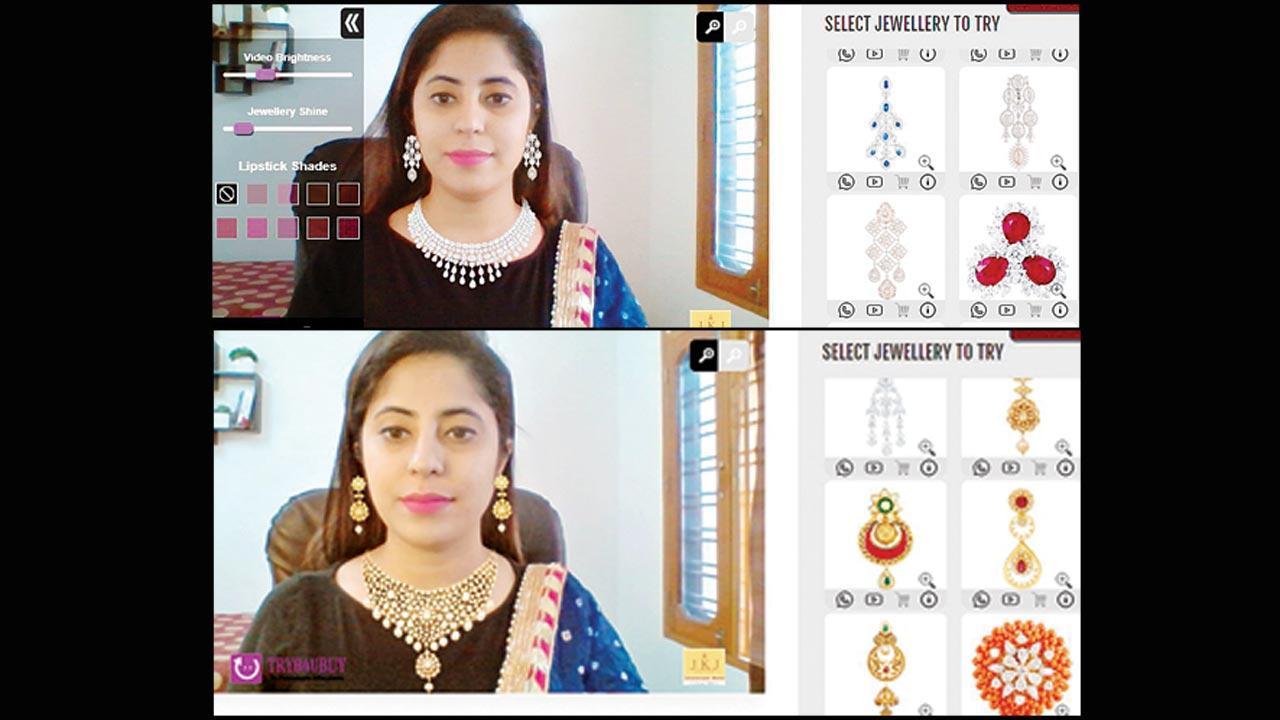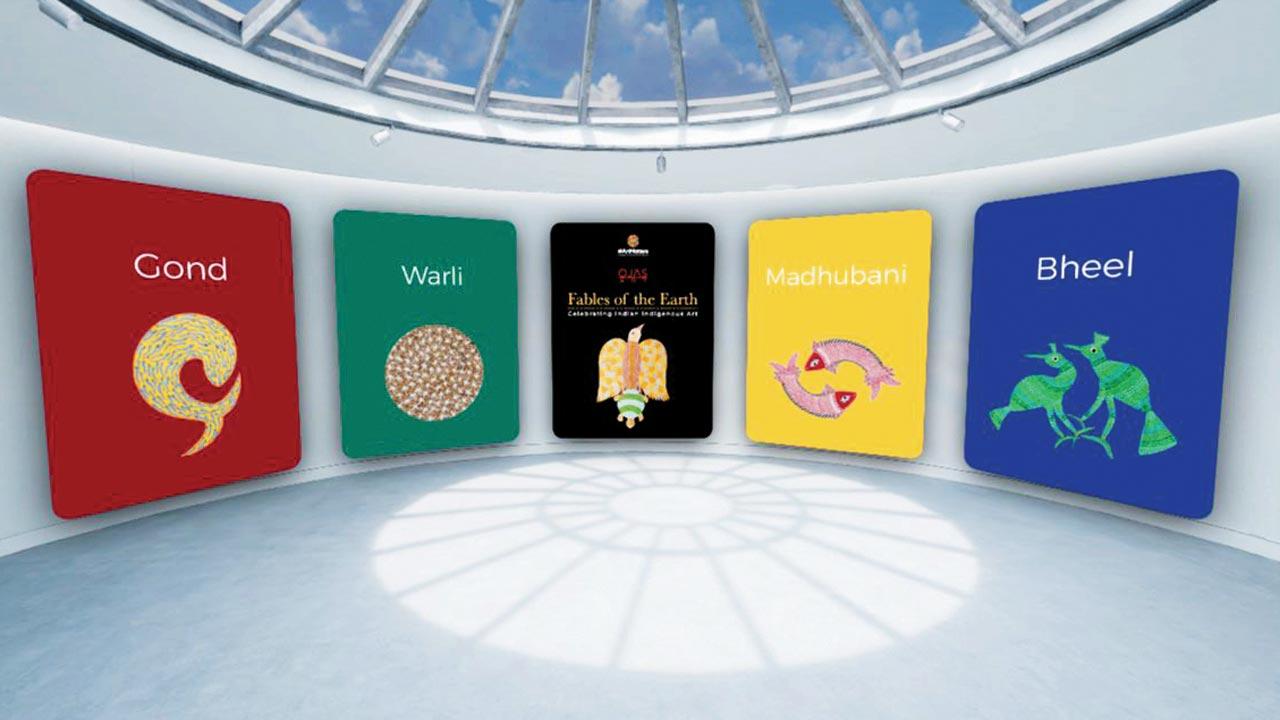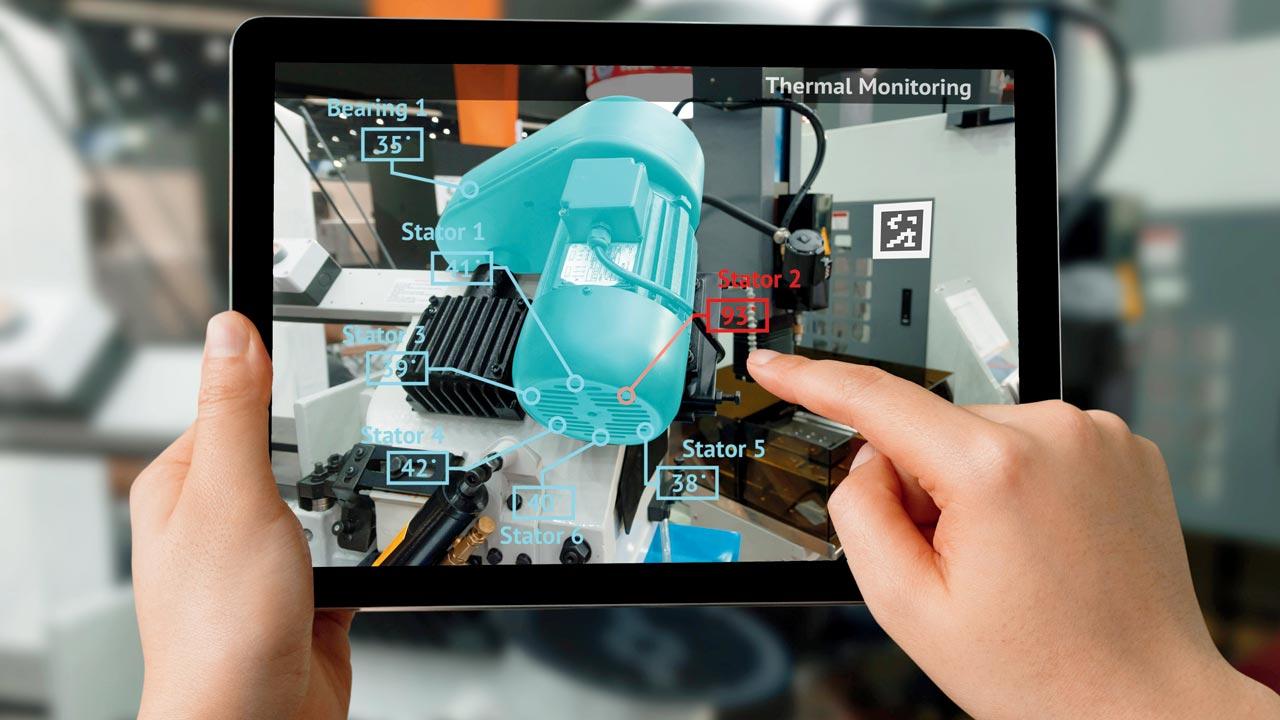With virtual fitting rooms trying to bring brick-and-mortar business online, shoppers can walk over to a virtual mirror to choose without changing or pick an appliance via 3D selection

Using AR face detection, the potential product snaps onto the user’s face. It then moves and resizes proportionally to accommodate user movement. It also gives an option to try out many designs in much lesser time
Last year, when Amrutha Valli launched TryB4UBuy, an experiential video commerce solutions company that allows customers to experience products through augmented reality (AR) and AI, she trained her lens on a challenging segment: traditional jewellers. “This group has been conservative and resistant to embracing digital technology. They were not even aware of what having a digital presence involved,” says Valli, technology evangelist and security consultant, who has more than two decades of experience with firms like Wipro and Tata Docomo. But the Coronavirus pandemic-induced lockdowns ushered in a change in mindset. With second and third generations of families now taking over the business, the atmosphere was fertile for tech innovations to be accepted.
Valli’s brand offers tech solutions that replicate the physical shopping experience online. Using AR face detection, the potential product snaps onto the user’s face. It then moves and resizes proportionally to accommodate user movement. “The moment someone spends time online trying out jewellery, the merchant sees traffic increase. They try style and are naturally tempted to try more.”
 XRC built Fables of the Earth—India’s first fully immersive experiential fundraising virtual art exhibition to support the indigenous artists and their arts during the global pandemic
XRC built Fables of the Earth—India’s first fully immersive experiential fundraising virtual art exhibition to support the indigenous artists and their arts during the global pandemic
There is research to support her statement. Data by researchperceptions.com has shown that 40 per cent of customers are willing to pay more for a product if they can experience it through AR, and 71 per cent of shoppers would shop with a retailer more often if the business offered AR-based product trials.
A virtual fitting room essentially allows shoppers to try on items without touching them or leaving home. It works by overlaying an item or product on a live video feed of a customer. The shopper can see the size, style, and fit of an item before they buy it. “Jewellers have until now focused mainly on ROI [return on investment]. It doesn’t mean that if you pour in a lakh today to offer AR on your platform, you’ll make money immediately. We have them understand that it’s a marketing tool with multiple benefits.”
 Hand holding tablet with AR service
Hand holding tablet with AR service
Ram Narasimhan is the Global head for AI and cognitive services at Xebia Global Services, an innovative IT Consultancy Company. According to him, while AI is beneficial for certain industries such as cosmetics, AR works best for the retail sector where people get to see the entire look and fit. “AI, just like AR [Augmented Reality] uses algorithms and Machine Learning to produce full-body 3D shopper models positioned in front of cameras. RFID [radio frequency identification] is another common technology used. It scans items selected by the shopper,” he says. The biggest plus of virtual fitting rooms is that they eliminate the hassle of choosing the right size and fit from the hanger and then walking over to a physical trial room and getting in and out of clothes. “Fashion retailers can harness a sea of customer data that enables them to understand shopper choices. They can review which collection is received with interest and find out how customers are buying products. They can figure for instance, which style is popular for what body type in a particular market. This helps them with future assortments and product photography.”
While Amazon introduced its Echo Look device with a voice-controlled camera that is based on AR technology and is aimed to work as a “magic mirror”, Apple has the ARKit that can be used to develop virtual fitting room apps for iOS.
 Ayush Bansal and Amrutha Valli
Ayush Bansal and Amrutha Valli
Aayush Bansal, who co-founded RADAR Agency, an AR and VR solutions company, with Aayushman Sinha and Ujjwal Sharma, believes that in 2022 the focus will be on giving users the capability to make shopping choices using their smartphones. “The buying process has changed and we are seeing this in the consumer appliances sector as well. You’d usually go to a multi-brand store, where the salesperson would show you a bunch of machines and push the ones that they are earning a commission on. Now, you’re going to cover a large part of your consideration set before actually purchasing the product,” he says. Let’s say you want to buy a coffee machine, you can click a few buttons and understand how it works while enjoying 3D. “Animation will actually tell me where and how to add the coffee and the milk. Now, let’s take this a step forward to post-purchase servicing. Until now, training for service agents has been expensive because it involves physically organising training. Now, it will be remote.”
Research company MarketsandMarkets expects the global virtual fitting room market to grow from USD 2.9 billion in 2019 to USD 7.6 billion by 2024, at a CAGR of 20.9 per cent during the forecast period. Fashion brands like Burberry, Ralph Lauren, Gucci, Louis Vuitton, Bloomingdales, and Levi’s are already enhancing their virtual fitting solutions to give more control to shoppers about their choices. Anshul Agarwal, Co-Founder, XR Central, an extended reality-based products solutions company, says moving on, we’ll be seeing a hybrid model. “Technology is ever-changing. You’ll have offline events but with an additional digital component, which is great because it works well for people who may not be in a position to travel. Thanks to the demand, even devices like Mixed Reality headsets are getting cheaper. It used to cost Rs 2 lakh and now, Rs 14,000.” Agarwal believes all this is essentially driving better decision making. “Whether a product or a tourist destination, you figure whether it works for you or not, and then make a choice.”
But, how close does virtual get to the real deal? “Impressively close and accurate,” thinks Nishit Nanda, CEO of youlry.com, a cloud-first, consumer focused D2C brand for gold and diamond jewellery. “It’s exactly like trying out jewellery in front of a mirror in a showroom. The app scans your face or wrist in real-time and shows the fittings. Plus, it gives an option to try out many designs in much lesser time, which is rather difficult if not impossible physically.”
 Subscribe today by clicking the link and stay updated with the latest news!" Click here!
Subscribe today by clicking the link and stay updated with the latest news!" Click here!










